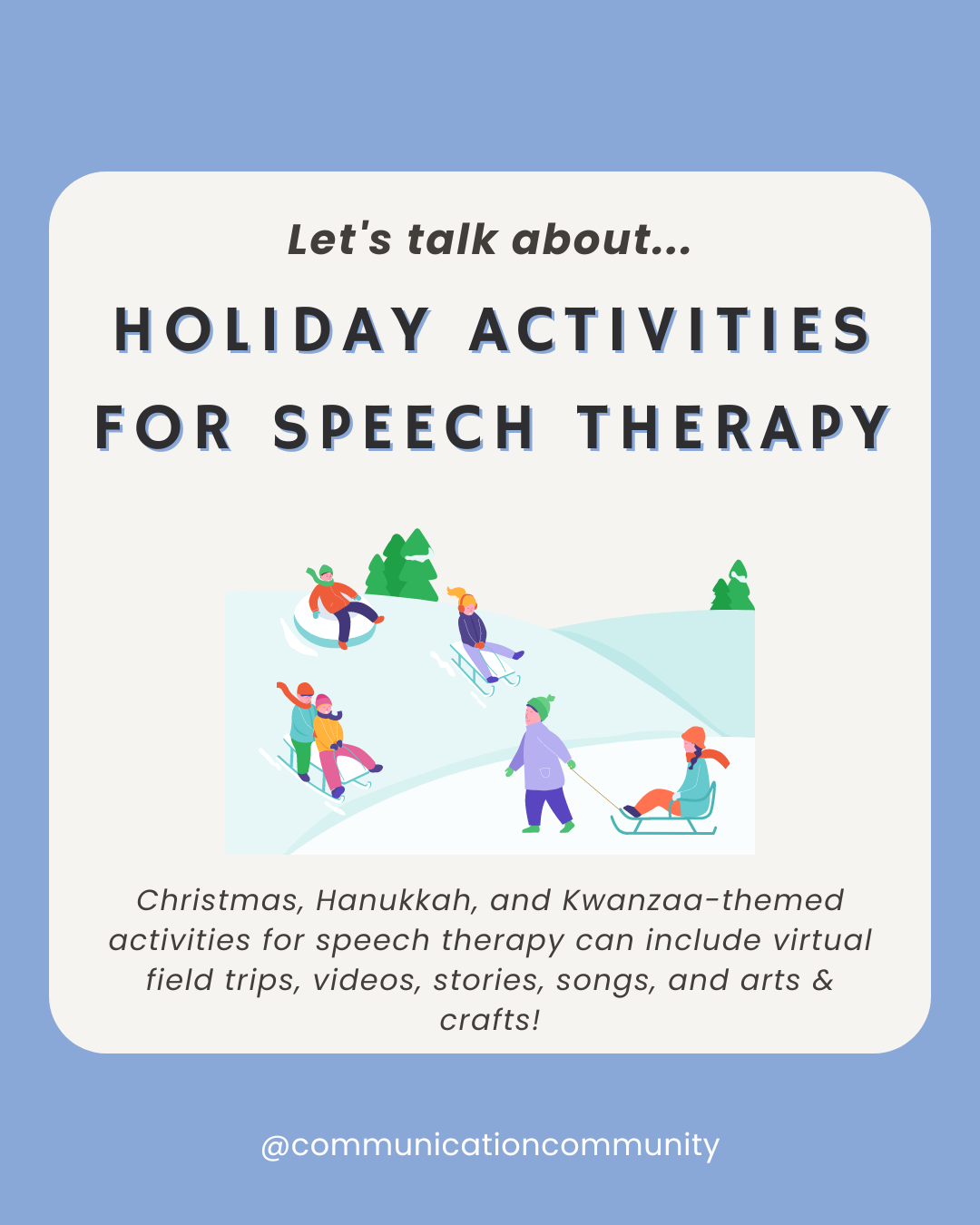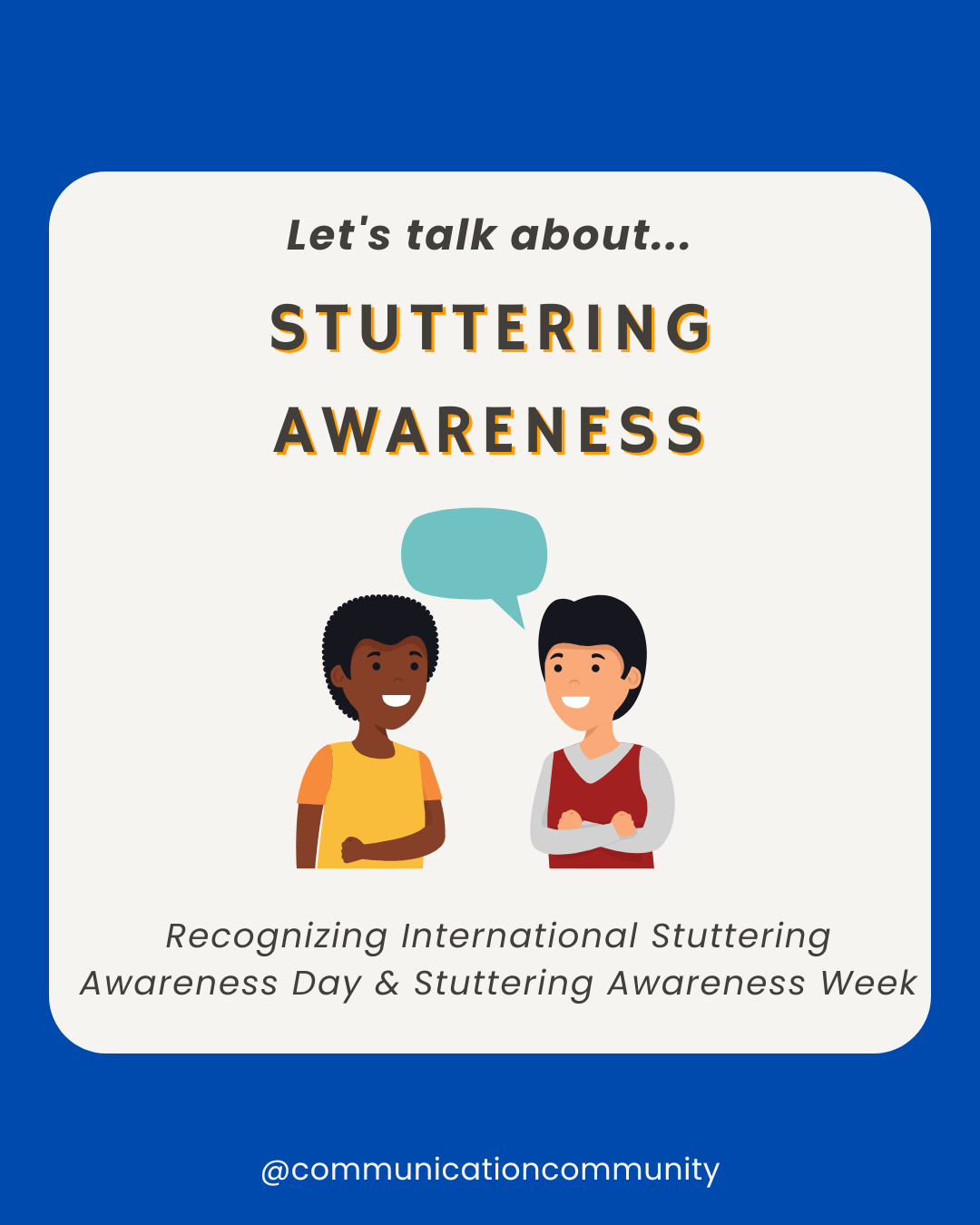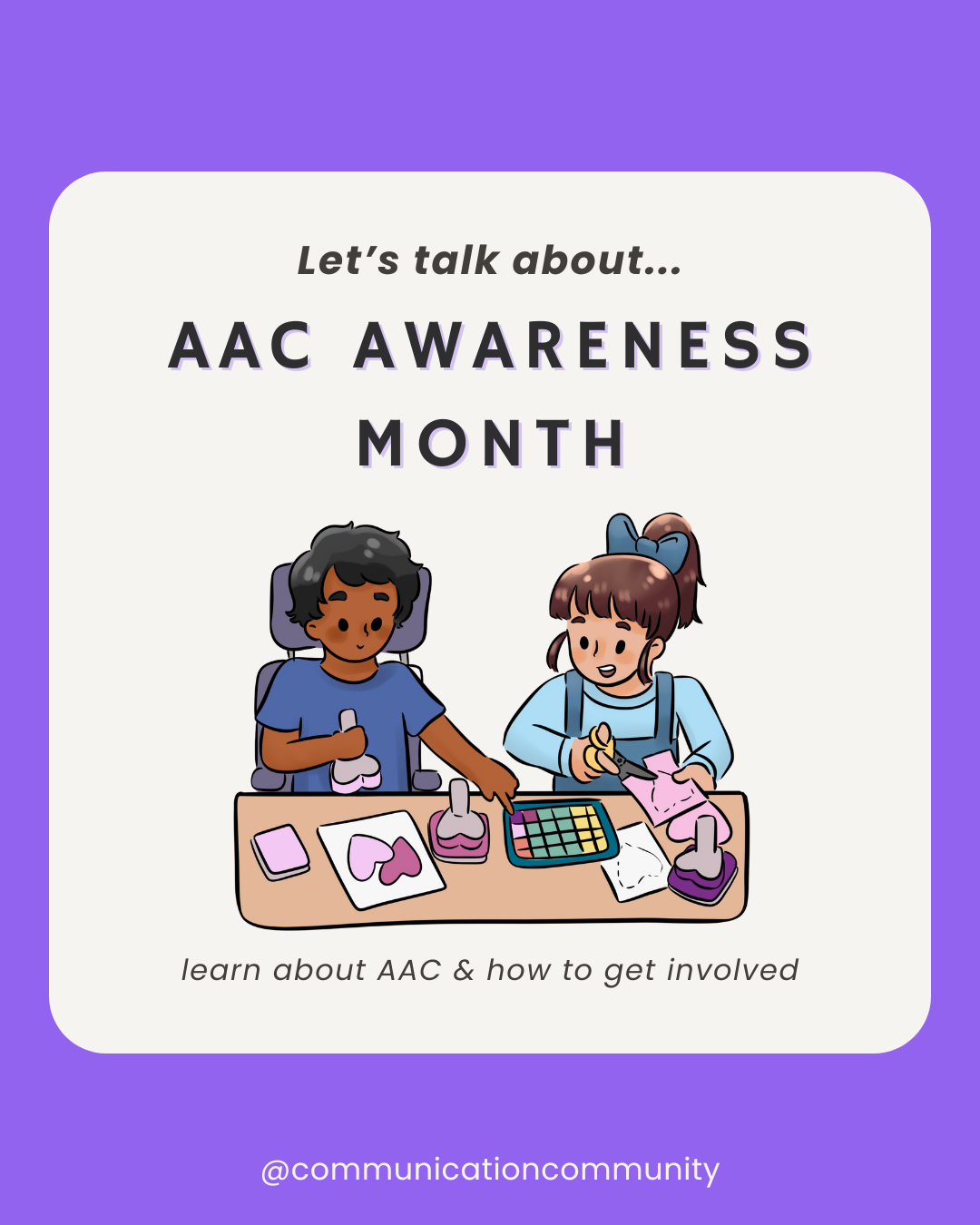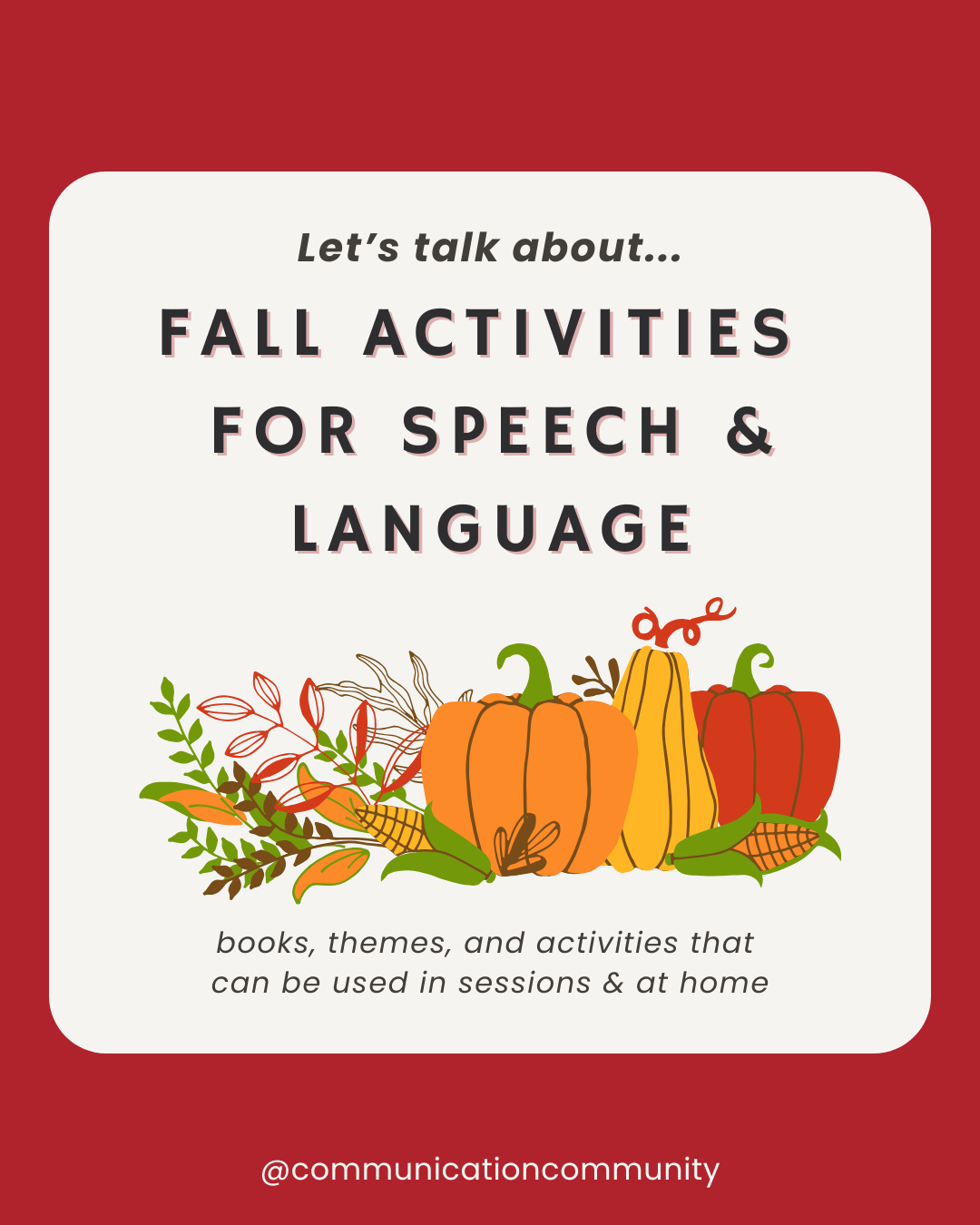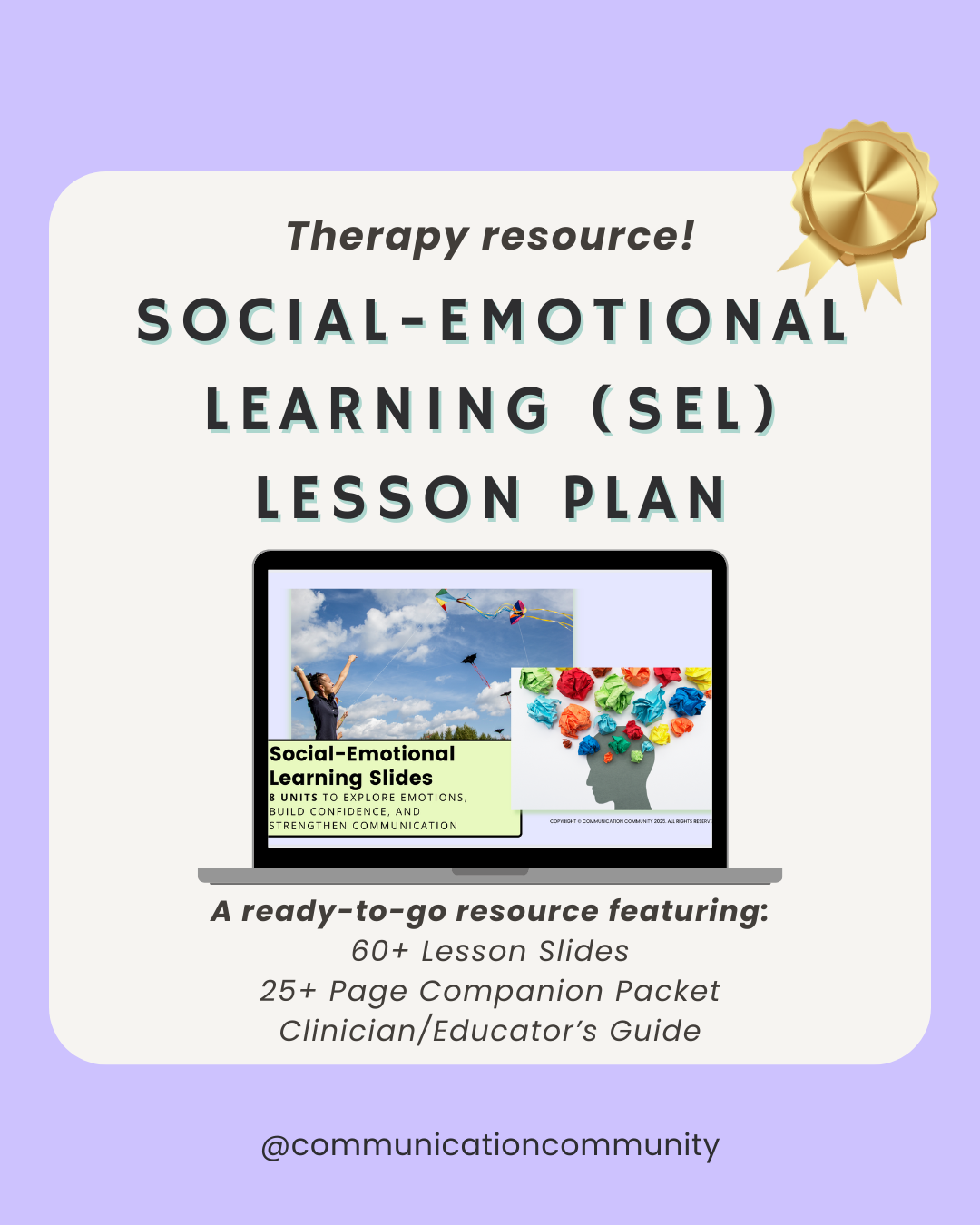Our comprehensive goal banks for school-aged language, AAC, Early Intervention & preschool, and fluency are available on our site or Teachers Pay Teachers store!
Save time creating goals with over THOUSANDS of possible goal combinations. Select your own combination of DO + CONDITION + CRITERION (and consistency) statements to develop personalized and measurable goals for your caseload.

Receptive language goals can be developed once an individual has been considered for speech-language intervention. Consideration involves a formal evaluation by a speech-language pathologist (SLP - hey, that’s us!).
In this case, the SLP has gathered information from the diagnostic assessments delivered during the evaluation(s) that hone in on the specific receptive language areas that show a delay or disorder. Receptive language areas may include (but are not limited to) receptive vocabulary, grammar, or following directions. Then, the goals are made!
For most individuals, the results from the evaluation may only warrant speech-language therapy for only a few skill areas (e.g., listening comprehension, following directions). Therefore, it is important that goals are written in a precise, measurable fashion so they are clear with what they are targeting. If an individual has adequate receptive vocabulary, then they do not need a goal for improving receptive vocabulary.
Writing Receptive Language Goals
Below you will find our Communication Community Goal Writing Formula that we use for writing all communication goals (e.g., receptive, expressive, pragmatic, etc.). This brief post will dive into receptive language goal making and even include a goal bank at the conclusion of the article!
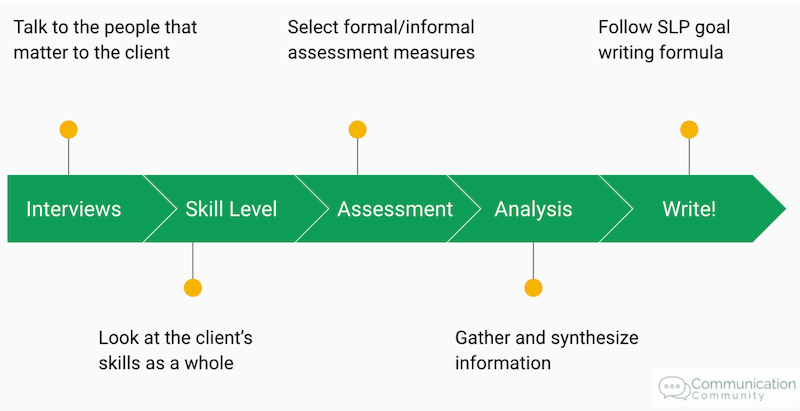
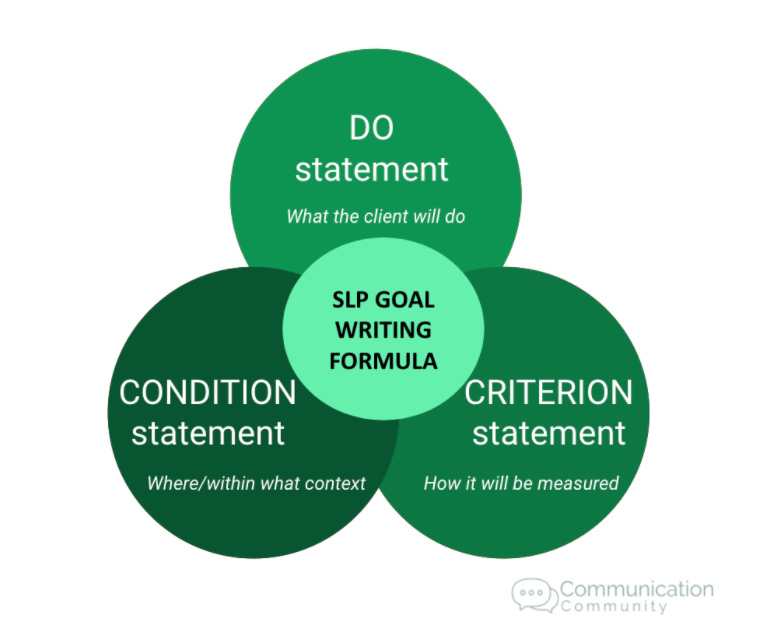
Steps for writing goals for speech and language skills (left); Communication Community goal writing formula (right)
As seen above, speech goals should be written with 3* components in mind: the DO statement, the CONDITION statement, and the CRITERION statement.
*Also commonly included is consistency (we incorporate this!). Aka does the individual have to meet a specific criterion more than once? A common example of this may include across 3 consecutive sessions. This is usually something understood by the therapy organization/service provider and is sometimes/sometimes not included in the written goal itself. This is to ensure that the skill has been generalized and provides more reliable data that the skill has been properly mastered.
DO statement
What the client is actually going to DO and the specific skill they will be working towards.
Example: identify similarities between 2 items
CONDITION statement
The specific setting and/or context your client will work on this skill.
Example: using real objects within a structured activity
CRITERION statement
How the client’s performance will be measured.
Example: in 9 out of 10 trials
DO + CONDITION + CRITERION
Example: [Client] will identify similarities between 2 items, using real objects within structured activities, in 9 out of 10 trials.
There you have it! An example using our Goal Writing Formula containing the DO + CONDITION + CRITERION (don’t forget to think about consistency!) for a receptive language skill area.
Receptive Language Goal Bank
For the purpose of this post, we have organized our receptive language goal examples to fall under some common receptive language domains that we see targeted in therapy.
Following Directions
-Example #1: [Client] will follow 5 multi-step directions, when delivered by a familiar communication partner (e.g., caregiver, therapist), in 4 out of 5 opportunities.
-Example #2: [Client] will follow 2-step directions containing temporal concepts (e.g., before, after), within a variety of natural environments, in 9 out of 10 trials.
-Example #3: [Client] will follow two 3-step written routines, within a structured activity, with 90% accuracy.
Grammar (syntax)
-Example #1: [Client] will select the appropriate irregular verb within written sentences, when presented within a multiple choice structured activity, in 9 out of 10 opportunities.
-Example #2: [Client] will circle the correct missing article in a written sentence, when presented with 2 choices within a structured activity, in 4 out of 5 trials.
-Example #3: [Client] will select the appropriate pronoun in a written sentence, when presented within a multiple choice structured activity, with 90% accuracy.
Categorical Concepts
-Example #1: [Client] will identify 1 similarity and 1 difference given a pair of items, within a multiple choice structured activity, in 9 out of 10 opportunities.
-Example #2: [Client] will select the word that does not correspond with the given category, within a multiple choice structured activity, in 9 out of 10 trials.
-Example #3: [Client] will sort pictures/objects into their assigned category for 5 separate categories, within structured activities, with 90% accuracy.
Semantics (vocabulary)
-Example #1: [Client] will identify the picture corresponding to the spoken word in a visual field of 4, within structured activities, in 4 out of 5 opportunities.
-Example #2: [Client] will identify the synonym for 10 pairs of words, within a multiple choice structured activity, in 9 out of 10 trials.
-Example #3: [Client] will select the definition of a given word for 25 words, within a multiple choice structured activity, with 90% accuracy.
Reading/Listening Comprehension
-Example #1: [Client] will circle 4 story elements (e.g., character, setting, problem, solution), when presented within a short story, in 4 out of 5 opportunities.
-Example #2: [Client] will select the correct response to the wh- question relating to a short paragraph, within a multiple choice structured activity, in 4 out of 5 trials.
-Example #3: [Client] will recall 2 events relating to a recent conversation, within an unstructured task, with 90% accuracy.
As you can see above, some of the goals are written very specifically and some are slightly broader - both are OKAY! However, it is always important to remember the main takeaway is that what you are targeting is MEASURABLE. So if you can accurately document in a report a measurable interpretation of the goal, you are adequately presenting the progress of the skill. If you are unable to do so… you might want to reframe the way you wrote the goal.
Feel free to check out our additional goal-related resources:
Subscribe to our site to have a first look at the ones to come!
- How to Write Pragmatic Language Goals
- How to Write AAC Goals
- How to Write Play Skills Goals
- How to Write Articulation Goals
- How to Write Expressive Language Goals
- How to Write Fluency Goals (Stuttering)
- How to Write Voice Disorders Goals
- How to Write Cluttering Goals
- How to Write Phonological Awareness Goals
Want to know how we prep ourselves for goal-writing (and more)?
These are some of our favorite resources for working:
- Clipboard with storage- we use ours ALL THE TIME!
- Some really nice pens - the feel of a pen that writes so well...priceless.
- Blue light glasses- for when excessive screen time is just...necessary
Happy writing!
This post contains some affiliate links and we may be (slightly) compensated if you use them, but all opinions are our own. We appreciate the support!
Citations/further resources:
https://www.asha.org/practice-portal/clinical-topics/spoken-language-disorders/language-in-brief/

![How to Write Receptive Language Goals [with goal bank]](https://www.communicationcommunity.com/content/images/2024/07/How-to-Write-Receptive-Language-Goals--with-goal-bank--Design--1-.png)
